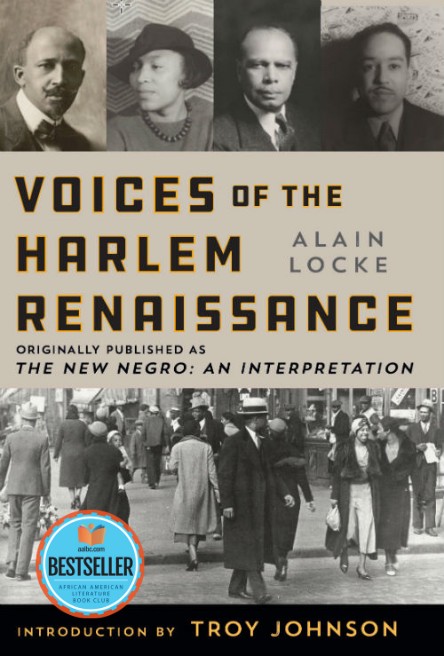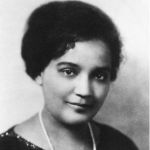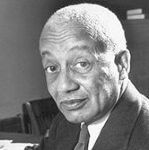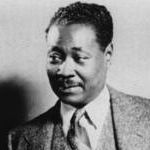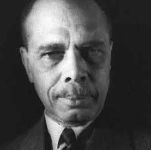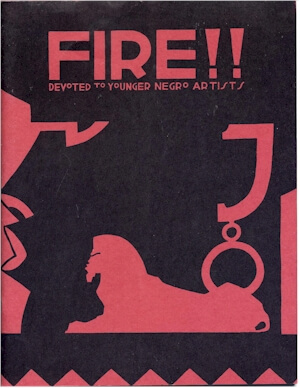Originally known as the “The New Negro Movement,” The Harlem Renaissance marked a period (abt. 1919 to 1933) whedropshadow pic hm-zoomre African-American artistic expression was redefined. The Harlem Renaissance also marked a period of tremendous quantity and quality of literary output. Alain LeRoy Locke was known as “The Father of the Harlem Renaissance.”
You’ll find information on many of the prominent authors of the Harlem Renaissance on AALBC. Discover a variety of books on the Harlem Renaissance or use our search engine to find a specific author or book.
Also check out Zora Neale Hurston’s Glossary of Harlem Slang, the Harlem Renaissance Related Links
Writers Commonly Associated with the Harlem Renaissance Include:
- Gwendolyn Bennett
- Arna Bontemps
- Sterling A. Brown
- Countee Cullen
- W. E. B. Du Bois
- Ralph Waldo Ellison
- Jessie Redmon Fauset
- Rudolph Fisher
- Marcus Mosiah Garvey, Jr.
- Angelina Weld Grimké
- Langston Hughes
- Zora Neale Hurston
- Charles S. Johnson
- Fenton Johnson
- Georgia Douglas Johnson
- James Weldon Johnson
- Nella Larsen
- Alain LeRoy Locke
- Claude McKay
- May Miller
- Richard Bruce Nugent
- Joel Augustus Rogers
- George S. Schuyler
- Wallace Thurman
- Jean Toomer
- Carl Van Vechten
- Dorothy West
- Walter White
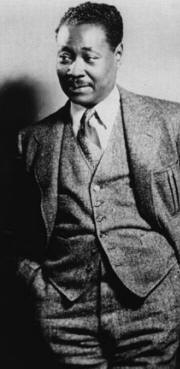
Voices of the Harlem Renaissance: Originally Published as The New Negro an Interpretation
Edited by Alain Locke and Introduction by Troy Johnson
Publication Date: Jan 24, 2020
List Price: $12.98
Format: Hardcover, 464 pages
Classification: Fiction
ISBN13: 9781568528403
Imprint: Konecky & Konecky
Publisher: Konecky & Konecky
Parent Company: Konecky & Konecky
Borrow from Library
Read an Excerpt from Voices of the Harlem Renaissance: Originally Published as The New Negro an Interpretation
With a New Introduction by AALBC’s Founder Troy Johnson
“Alain Locke’s The New Negro anthology (originally published in 1925) introduced the variety of artistic and cultural expression of African American writers, poets, and artists to a wider audience. Almost 100 years later, this treasure of an anthology, continues to accomplish the same task. The Harlem Renaissance marked a period, encompassing the entire 1920s, when African American artistic expression and output grew dramatically. The Harlem Renaissance also witnessed a period of published African American expression that was more political and bolder than any previous period since the abolitionist movement of the mid-nineteenth century. Voices of the Harlem Renaissance is not just a time capsule of African American life from a century ago, it is a foundation to help us understand not just African American culture, but American culture.”
—Troy Johnson, Founder AALBC.com
A Description from Scared Fire
Alain Locke is the acknowledged Father of the Harlem Renaissance. A highly educated man and the first African American to be awarded a Rhodes scholarship, Locke served as the bridge between a burgeoning literary expression centered in Harlem, New York, and the mainstream literary world. He brought the star writers of the renaissance, including Countee Cullen, Langston Hughes, and Claude McKay, broad literary attention and patrons wealthy supporters who provided financial support for struggling writers and artists. In this landmark anthology, Locke set forth the defining characteristics of the new Negro who was emerging in America’s northern cities: literary, artistic, cosmopolitan, and urbane.
Published in 1925, The New Negro is an anthology of poems, stories, and essays edited by Locke that includes such luminaries as W. E. B. Du Bois, James Weldon Johnson, Angelina Grimke, Hughes, Cullen, and McKay. It became a "Who’s Who" of the Harlem Renaissance and its defining text. Like the renaissance itself, The New Negro was a symbol of the literary fruit of the great migration of blacks from the rural South to the urban North. Locke was sure that Harlem was fast becoming a new mecca of black artistry and one of the world's cultural capitals, an assertion that was not hard to argue on the basis of the outstanding work represented in this volume.
The best of the work created during the renaissance — the criticism of Du Bois, the poetry of Johnson and Hughes, the fiction of McKay — has endured. And the Harlem of the 1920s and 1930s remains one of the iconic places in African American history: full of jazz, creativity, and beautiful black people on the move. But what became of the new Negro, that artful and cosmopolitan urbanite? There were lofty expectations, to be sure, but in retrospect and beyond the stardust, the Harlem Renaissance presented to the new Negro a hard lesson: the real work of the culture lay in assuring its permanence, not just basking in the flow of transient praise and voguishness. The artists of the renaissance were heavily dependent on the patronage of their fellow New Yorkers downtown, and Harlem's renaissance died out with onset of the Great Depression, when the patronage stopped flowing in even as Harlem's most enduring artists continued to produce important work. Nevertheless, the spirit of the so-called new Negro, the spirit of vital black urban creativity embodied in the works found in this collection, lives on.
Fire!! A Quarterly Devoted To The Younger Negro Artists
by Wallace Thurman
Currently Unavailable for Purchase on AALBC
Publication Date: Jun 01, 1985
List Price: $18.00
Format: Paperback, 48 pages
Classification: Fiction
ISBN13: 9780912607009
Imprint: Fire Pr
Publisher: Fire Pr
Parent Company: Fire Pr
Borrow from Library
FIRE!! was one of the most important publications of the Harlem Renaissance.
It was created in 1926 by a young group of African American artists and writers including Wallace Thurman, Lewis Alexander (Contributor), Gwendolyn Bennett (Contributor), Arna Bontemps (Contributor), Countee Cullen (Contributor), Waring Cuney (Contributor), Aaron Douglas (Illustrator), Arthur Huff Fauset (Contributor) , Langston Hughes (Contributor), Zora Neale Hurston (Contributor), Helene Johnson (Contributor), Richard Bruce Nugent (Illustrator), Edward Silvera (Contributor).

